
Close

Where every breath whispers Radhe Radhe, and every step touches eternity.
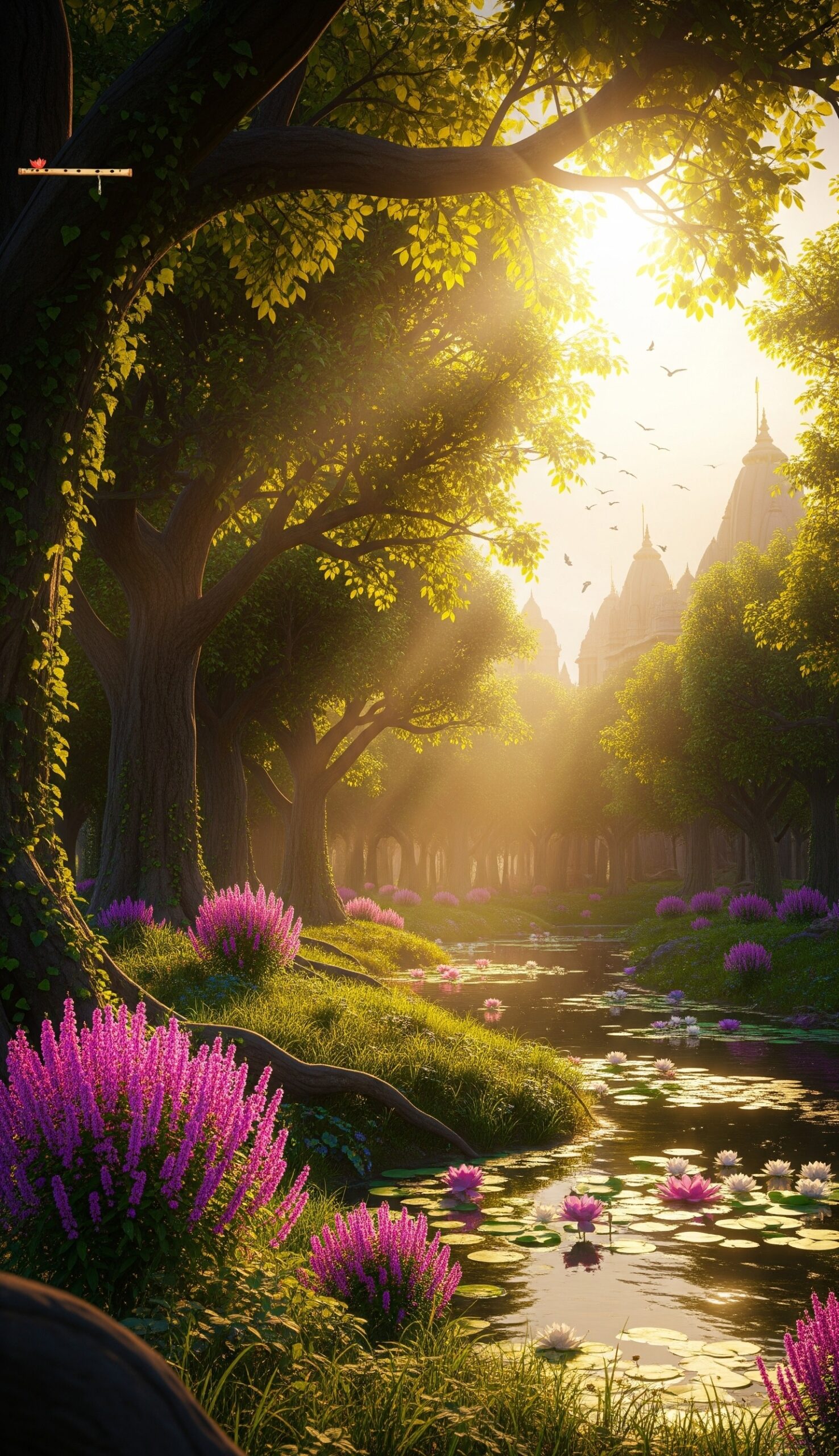
Introduction Vrindavan is not just a geographical town but a sacred space woven into the fabric of timeless scriptures. Its very name, “the forest of Vrinda Devi,” recalls the eternal presence of Tulasi Maharani, the goddess of devotion. The Puranas describe Vrindavan as non-different from Goloka, the highest spiritual abode, where Radha and Krishna eternally reside. Saints and acharyas throughout history have affirmed that simply remembering “Vrindavan” purifies the heart and uplifts the soul. Divine Experience For a devotee, every verse describing Vrindavan feels alive upon entering its streets. Chanting scriptures here doesn’t feel like reading history but reliving Krishna’s divine pastimes. The heart experiences a deep pull — as if Krishna’s leelas are still unfolding in the unseen dimension of the dhama. Pilgrims often describe a sense of timelessness, as though they have stepped into the pages of the Padma Purana itself. Architecture & Atmosphere The scriptural Vrindavan is envisioned as a boundless, lush forest dotted with groves, ponds, and Yamuna’s banks — each resonating with Krishna’s flute. While today temples and ashrams rise across the landscape, saints remind us that the eternal Vrindavan exists beyond bricks and mortar. The true architecture is the spiritual blueprint described in the scriptures — the divine footprints, leela-sthals, and sacred groves that form an eternal map for seekers.
Vrindavan houses over 5,000 temples, each narrating a unique aspect of Radha-Krishna’s pastimes. Some key ones:

The most beloved deity of Vrindavan, Shri Banke Bihari, resides here — enchanting every heart with His madhurya svarupa, the sweet, ever-youthful form of Krishna.
This temple was established by Shri Swami Haridas, the saintly guru of Tansen, in the 16th century. Out of pure devotion, Shri Swami Haridas sang to his Lord, and by divine grace, the murti of Shri Banke Bihari appeared — not as a child, not as a grown youth, but in the eternal in-between form, embodying Krishna’s timeless sweetness.
So captivating is His presence that darshan is granted only in short intervals. Curtains open and close repeatedly, for no one can gaze at Banke Bihari too long without being overwhelmed. Pilgrims testify that even a single glance feels like nectar pouring straight into the soul. Here, Krishna stands not as the ruler of the cosmos, but as the playful beloved of Vrindavan.
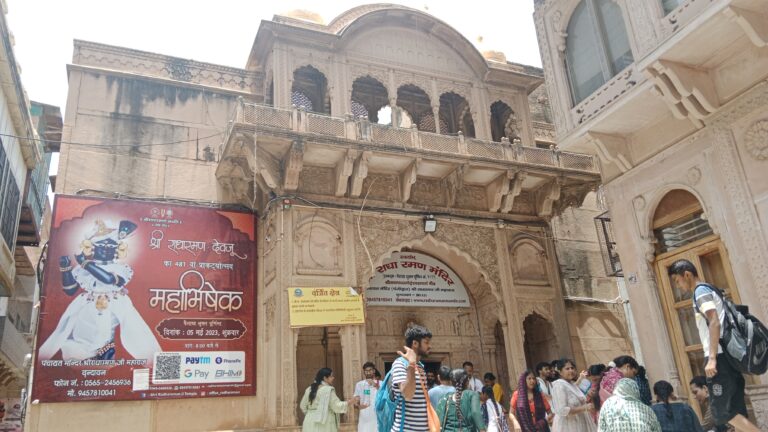
In this temple, the Lord revealed Himself in a most wondrous way. Shri Gopal Bhatta Goswami Ji, one of the Six Goswamis of Vrindavan, longed for a deity to worship. One day, from his Shaligram Shilas, Krishna Himself manifested as Radha Raman, a perfectly formed murti holding a flute — though no flute was ever carved. It mystically appeared, declaring His eternal playfulness.
“Radha Raman” means the one who brings joy to Radha. True to His name, He stands glowing in beauty, eternally delighting Shrimati Radharani. Devotees who come here feel His presence as alive, radiant, and intimate, as if Krishna Himself has chosen to be personally worshipped in this sacred spot.
Radha Raman Mandir is not just a temple — it is a direct doorway into Krishna’s boundless mercy and Radha’s eternal joy.
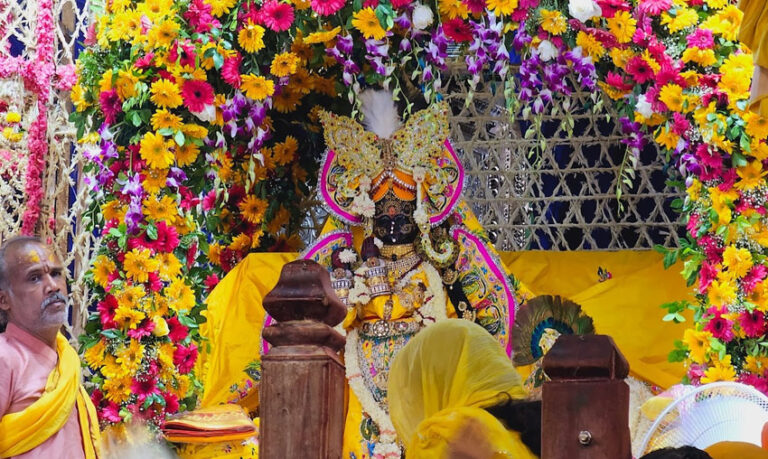
If Vrindavan is the land of divine love, Radha Vallabh Mandir is its throne. Established by Shri Harivansh Mahaprabhu, this temple highlights a profound truth — that Krishna is Vallabh, the beloved who belongs fully to Radha.
Here, Radha’s love is supreme, radiant, and undeniable. Pilgrims bow before the altar where Krishna is worshipped not alone, but as eternally united with His Radharani. The air of the temple vibrates with kirtans full of sweetness and longing, echoing the moods of devotion where Radha’s tender supremacy is celebrated.
Stepping into this temple feels like stepping into Radha’s very heart, where love itself becomes the deity.
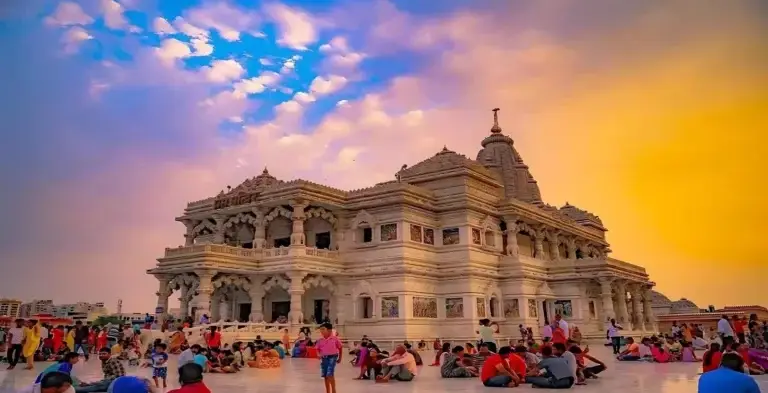
Standing like a marble jewel in Vrindavan, Prem Mandir is a glowing expression of divine love. Built by Shri Jagadguru Kripalu Maharaj, this temple is adorned with intricate carvings depicting Krishna’s leelas — from lifting Govardhan Hill to dancing with the gopis in the Rasa Lila.
By day, its white marble radiates purity. By night, illuminated in brilliant colors, it becomes a celestial vision that leaves devotees speechless. Walking around the temple grounds, one feels embraced by stories of Krishna that come alive on the marble walls.
Prem Mandir is not only an architectural marvel — it is a living scripture in stone, a reminder that Vrindavan’s heart beats with love eternal.
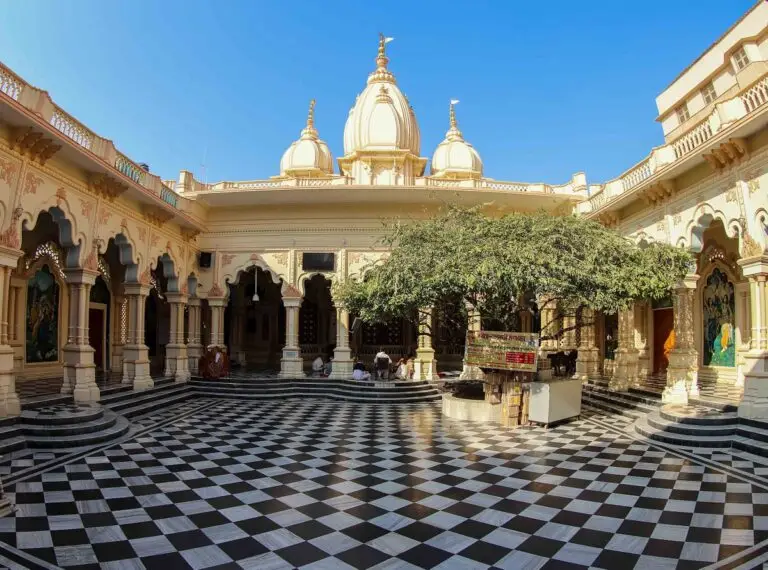
For devotees around the world, ISKCON Vrindavan has become a spiritual home. Founded by Srila A.C. Bhaktivedanta Swami Prabhupada in 1975, this temple is alive with the sound of kirtan, the chanting of the holy names that resound day and night.
Here, pilgrims gather from every corner of the globe — chanting, dancing, and studying the Srimad Bhagavatam. Festivals are celebrated with grandeur, uniting cultures and hearts in devotion to Radha-Shyamasundar.
The temple stands as proof that Vrindavan’s message of love is not confined to India, but belongs to the whole world. Within its walls, one experiences what it means to truly live in the shelter of the holy name.